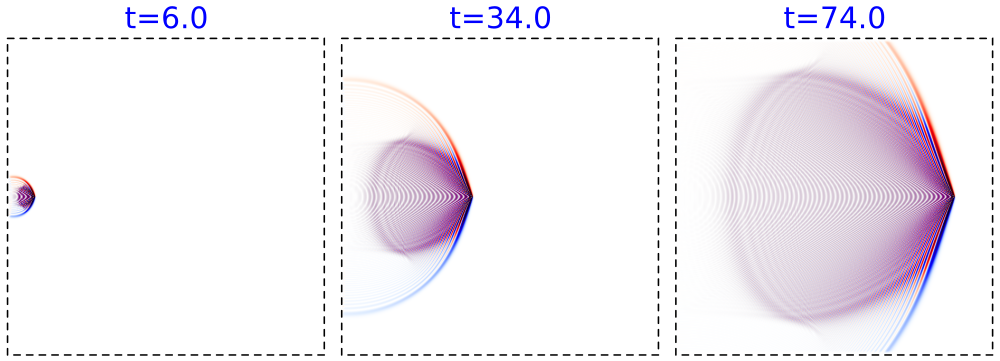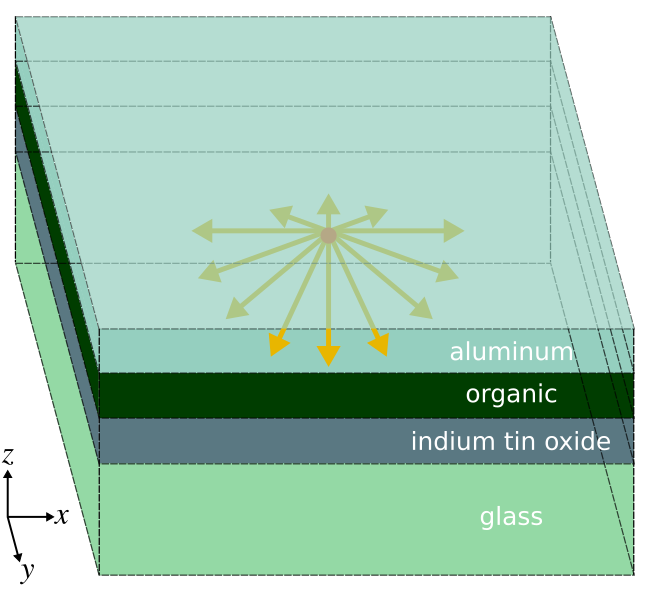

Get inspired and reuse them as you need! Before we get to writing the first simulation, we will discuss the installation procedure and multiprocessing. I will simply try to provide the reader with several working examples. This page does not aim to substitute the official MEEP documentation nor Python-Meep documentation. The reason why I chose the Python interface lies in my preference of Python syntax as well as in many excellent Python modules available ( scipy, matplotlib and mayavi2 will be used in the examples here). Another interface links MEEP to the Scheme language, which is also extensively used on the official MEEP website. One of the interfaces is python-meep (with its official website at Ghent university). The core of MEEP is written in efficient C++ code, and that can be either directly linked into another C++ program, or an interface can be generated that allows to access the functions from high-level languages. The examples here are based on the python-meep interface. I will try to provide the reader with a module and examples that should help to focus on the scientific part of the task.

On the other hand, it may be quite disappointing to start using MEEP: Setting up a realistic simulation is usually a challenging scientific task on its own, and with MEEP one also needs to write a working code.
#Meep fdtd software
for automated optimization of the structure, tight integration with other software packages or research in modern areas of physics). This has a good purpose, as experienced users may employ MEEP for problems where more user-friendly simulation software does not provide enough versatility (e. MEEP is controlled by command-line interface which requires some programming. It can compute the propagation of an electromagnetic wave through very complicated structures, using realistic material models (including dispersion, conductivity, anisotropy or nonlinearities), distributed computing and combination of time-domain and frequency-domain solver. MEEP is an open-source implementation of the finite-difference time-domain (FDTD) algorithm. I use the python-meep interface for all examples presented. Installation procedure, basic simulation, material definition and some advanced features are discussed. Summary: This page is based on my experience with the MEEP Finite-Difference Time-Domain simulations. Forum, MPI: A Message Passing Interface, in: Supercomputing 93, Portland, OR, 1993, pp. 1999 Geoscience and Remote Sensing Symposium (IGARSS), Hamburg, Germany, vol.
#Meep fdtd update
Yeager, HDF: An update and future directions, in: Proc. Nature of problem: Classical electrodynamics Solution method: Finite-difference time-domain (FDTD) method Running time: Problem dependent (typically about 10 ns per pixel per timestep) References: GNU Guile, Libctl, M.
#Meep fdtd free
RAM: Problem dependent (roughly 100 bytes per pixel/voxel) Classification: 10 External routines: Optionally exploits additional free software packages: GNU Guile, libctl interface library, HDF5, MPI message-passing interface, and Harminv filter-diagonalization (which requires LAPACK and BLAS linear-algebra software ). Operating system: Any Unix-like system developed under Debian GNU/Linux 5.0.2. of bytes in distributed program, including test data, etc.: 1 925 774 Distribution format: tar.gz Programming language: C++ Computer: Any computer with a Unix-like system and a C++ compiler optionally exploits additional free software packages: GNU Guile, libctl interface library, HDF5, MPI message-passing interface, and Harminv filter-diagonalization. of lines in distributed program, including test data, etc.: 151 821 No.

Ireland Licensing provisions: GNU GPL No. Program summaryProgram title: Meep Catalogue identifier: AEFU_v1_0 Program summary URL:: Program obtainable from: CPC Program Library, Queen's University, Belfast, N. These include pervasive interpolation and accurate modeling of subpixel features, advanced signal processing, support for nonlinear materials via Padé approximants, and flexible scripting capabilities. In particular, we focus on aspects of implementing a full-featured FDTD package that go beyond standard textbook descriptions of the algorithm, or ways in which Meep differs from typical FDTD implementations. This paper describes Meep, a popular free implementation of the finite-difference time-domain (FDTD) method for simulating electromagnetism.


 0 kommentar(er)
0 kommentar(er)
